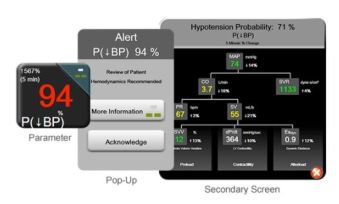Blood Supply and Demand Simulation Model Could Help Nation Prepare for Emergencies
FDA developed blood supply model to estimate amount of blood available in system during national emergencies
- Estimates how much blood is available during pandemic influenza outbreak and mass casualty event caused by nuclear device detonation
- Could threaten blood supply by reducing number of people to donate or by increasing the amount of blood needed
- Allows calculation of supply—and potential for shortages—based on how long RBCs (short half life) have been in storage
Based on real-world sources of data
- National blood supply produced by America’s Blood Centers
- Center for Medicare and Medicaid Center for Medicare and Medicaid Services database
- National Blood Collection and Utilization Survey
- Centers for Disease Control and Prevention
Ran simulation on how pandemic could affect inter-regional blood supplies
- Estimated 541,000 RBC units were lost overall; South had highest percentage of blood lost (15.5%), while the East had the lowest lost (13.8%)
Based on current levels of blood collection, use, and other factors, the U.S. blood supply and demand system is flexible and reliable enough to respond to emergencies

Nanotechnology Programs at FDA
Build regulatory science knowledge, facilitate collaborations and partnerships to establish a flexible, product-focused, science-based approach to regulation
- Nanotechnology Task Force
- Nanotechnology Task Force Report
- Nanotechnology Guidance Documents
- Nanotechnology Partnerships at FDA
National and International Activities
- Member agency in the National Nanotechnology Initiative
- World-class R&D program, transfer of new technologies, educational resources, infrastructure and tools to advance and responsible development of nanotechnology
- International Organization for Standardization (ISO)
- Organisation for Economic Co-operation and Development (OECD)

FDA’s efforts to enhance the patient perspective and experience in drug development and review
Patients are becoming driving force of medical research enterprise
- Capturing patient experience may be quantitative or qualitative
- Transforming nearly every aspect of medical product development
- Informing about benefits that matter most and risks they are most concerned
Benefit-Risk Assessment in Drug Regulatory Decision-Making
- Enhance benefit-risk assessment in human drug review and FDA’s decision-making process
- Outline how patient experience data and related information can be used to inform benefit-risk assessment
Incorporating Patient Voice into Benefit-Risk Assessments
- Inform clinical context and provide insights to frame assessment of benefits and risk
- Provide a direct source of evidence regarding the benefits and risks based on methodologically-sound data collection tools
- Hosting patient-focused drug development public meetings
- Encouraging patient stakeholders to conduct externally-led, patient-focused drug development meetings
- Providing patients, caregivers, advocates more channels to provide meaningful input
- Launching pilot programs to foster design of clinical trials that place less burden on patients
Image credits: FDA

